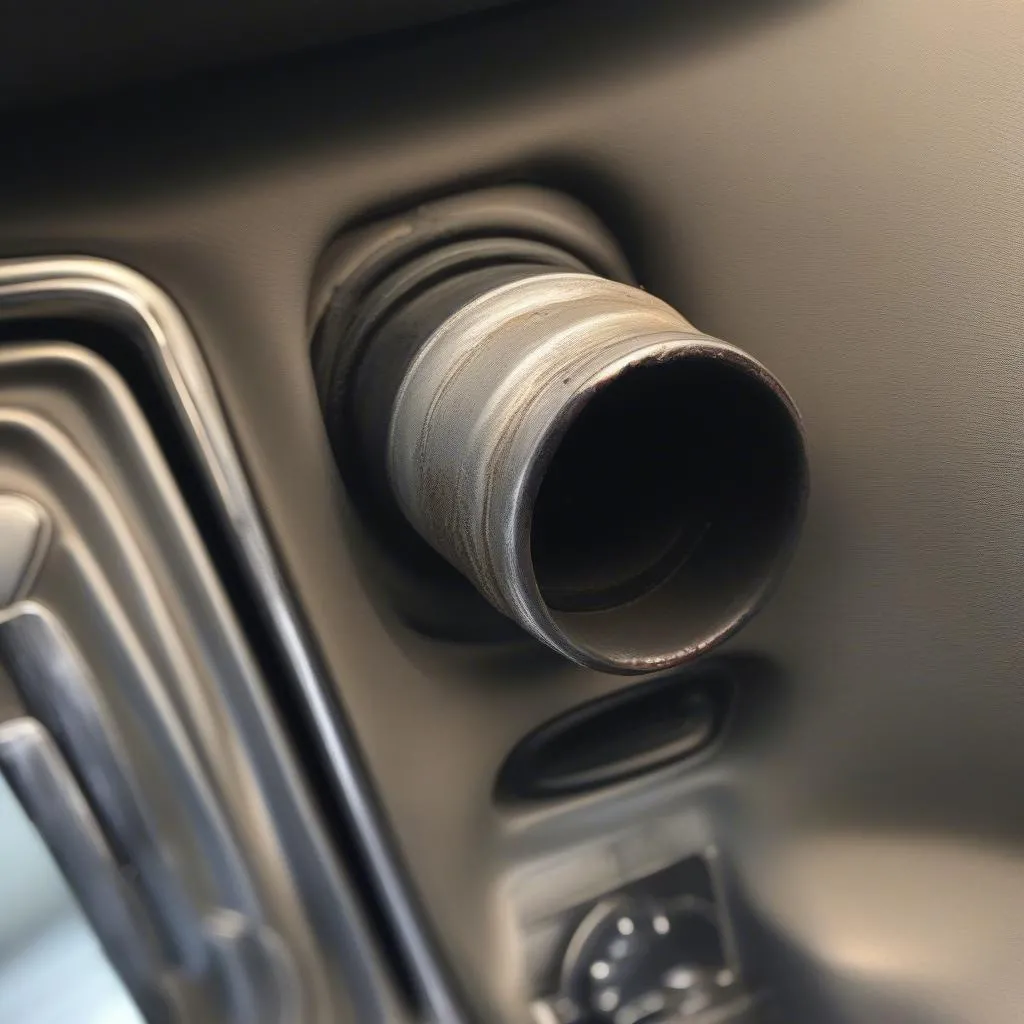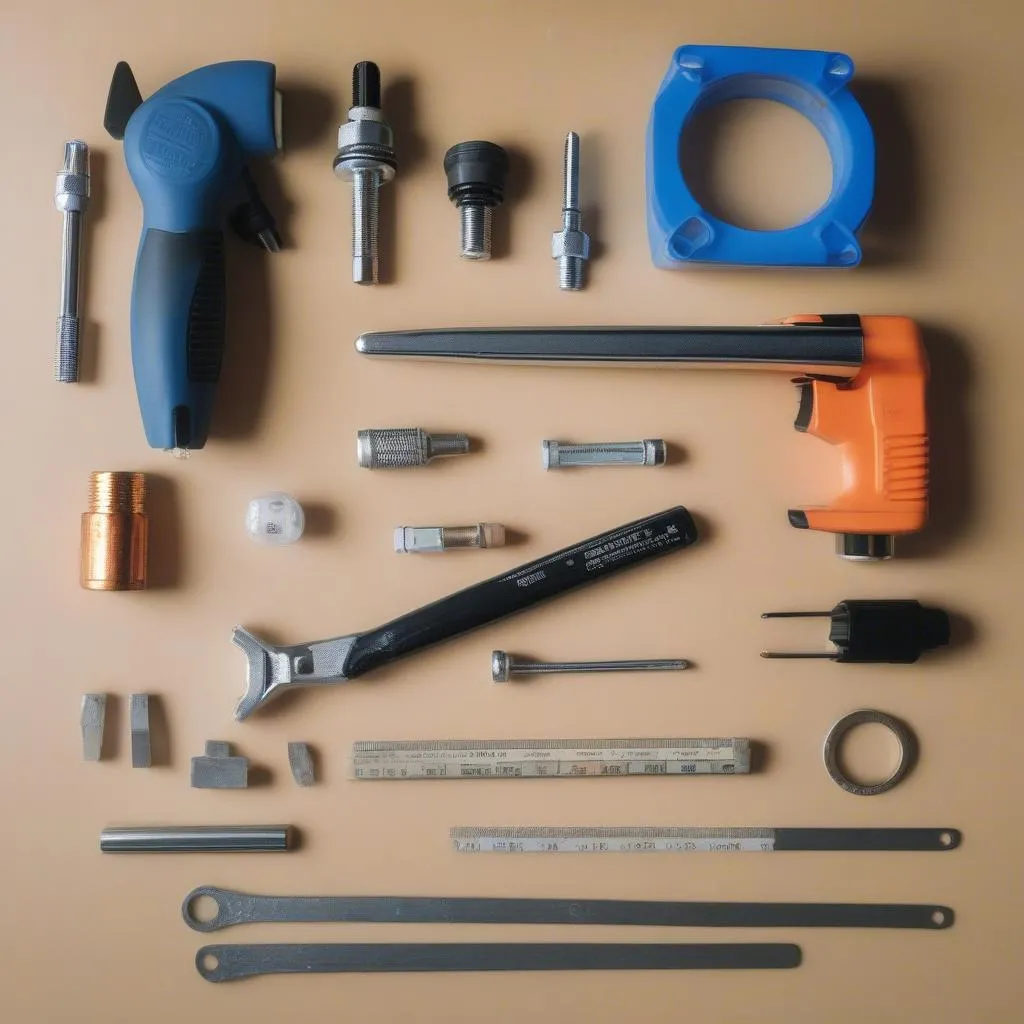Is your Mercedes Benz 2000 ML blowing cold air when you want heat? This is a common problem that many Mercedes owners face, often stemming from a faulty heat diverter. The heat diverter, also known as a heater control valve or blend door actuator, controls the flow of coolant to the heater core, which is responsible for heating the air inside your vehicle. Fortunately, fixing this issue may be simpler than you think. This guide will walk you through identifying the problem, gathering necessary tools, and performing the repair yourself.
Understanding the Problem: Why Is My Mercedes Blowing Cold Air?
Several culprits could cause your Mercedes Benz 2000 ML to blow cold air instead of warm, toasty heat. Let’s break down the most likely reasons:
- Faulty Heat Diverter: The most common culprit, a failing heat diverter, can’t properly direct the flow of hot coolant, resulting in lukewarm or cold air blowing from your vents.
- Low Coolant Level: Coolant is essential for regulating your engine’s temperature and transferring heat to the heater core. Low coolant levels can directly impact your heating system.
- Air Pocket in the Cooling System: Air pockets can disrupt the coolant flow, leading to inefficient heating, much like low coolant levels.
- Malfunctioning Thermostat: The thermostat regulates the engine’s coolant temperature. If it’s stuck in the “cold” position, it won’t allow the engine to reach the optimal temperature for heat generation.
 Faulty Heat Diverter
Faulty Heat Diverter
Identifying a Faulty Heat Diverter
Before starting any repairs, it’s crucial to confirm that the heat diverter is the root of the problem. Here’s what to look out for:
- Inconsistent Heat: Your heater might blow hot air sometimes and cold air other times, indicating a problem with the diverter’s ability to function correctly.
- Noises from the Dashboard: Listen carefully when you adjust the temperature controls. Clicking, tapping, or whining sounds from behind the dashboard can signal a failing heat diverter motor.
- Heater Control Issues: If you notice that your temperature control knob isn’t responding as it should or feels loose, it could be linked to a faulty diverter or related components.
 Mercedes Benz Dashboard Heater Controls
Mercedes Benz Dashboard Heater Controls
Gathering Your Tools and Supplies
Once you’ve determined that the heat diverter is likely the issue, it’s time to gather the necessary tools and supplies for the repair:
- Replacement Heat Diverter: Make sure to purchase the correct part compatible with your Mercedes Benz 2000 ML model.
- Screwdriver Set: Have a variety of Phillips and flathead screwdrivers on hand to handle different screw types.
- Socket Set: A socket set with extensions may be necessary to access and remove bolts holding the diverter in place.
- Pliers: Pliers can be helpful for removing hose clamps or maneuvering components in tight spaces.
- Coolant: You might need to top off your coolant after replacing the heat diverter, so have some compatible coolant ready.
 Tools and Supplies for Heat Diverter Replacement
Tools and Supplies for Heat Diverter Replacement
Step-by-Step Guide to Replacing Your Heat Diverter
While the exact location of the heat diverter can vary slightly between car models, the general process is relatively similar. Always refer to your vehicle’s service manual for precise instructions specific to your Mercedes Benz 2000 ML.
Here’s a general overview of the steps involved:
- Locate the Heat Diverter: The heat diverter is typically located on the passenger side, behind the glove box or underneath the dashboard. You may need to remove the glove box or some dashboard trim panels to access it.
- Disconnect the Battery: Before working on any electrical components, always disconnect the negative terminal of your car battery to prevent electrical shorts or shocks.
- Remove the Old Diverter: Once you’ve located the heat diverter, disconnect the electrical connector and any vacuum lines attached to it. Then, carefully remove the screws or bolts holding the diverter in place.
- Install the New Diverter: Position the new heat diverter in place and secure it with the screws or bolts. Reconnect the electrical connector and any vacuum lines you disconnected earlier.
- Reconnect the Battery: Reattach the negative terminal of your car battery.
- Test the System: Turn on your car and test the heating system by running it through its full range of temperatures. Ensure that hot air blows when desired and that you hear no unusual noises.


